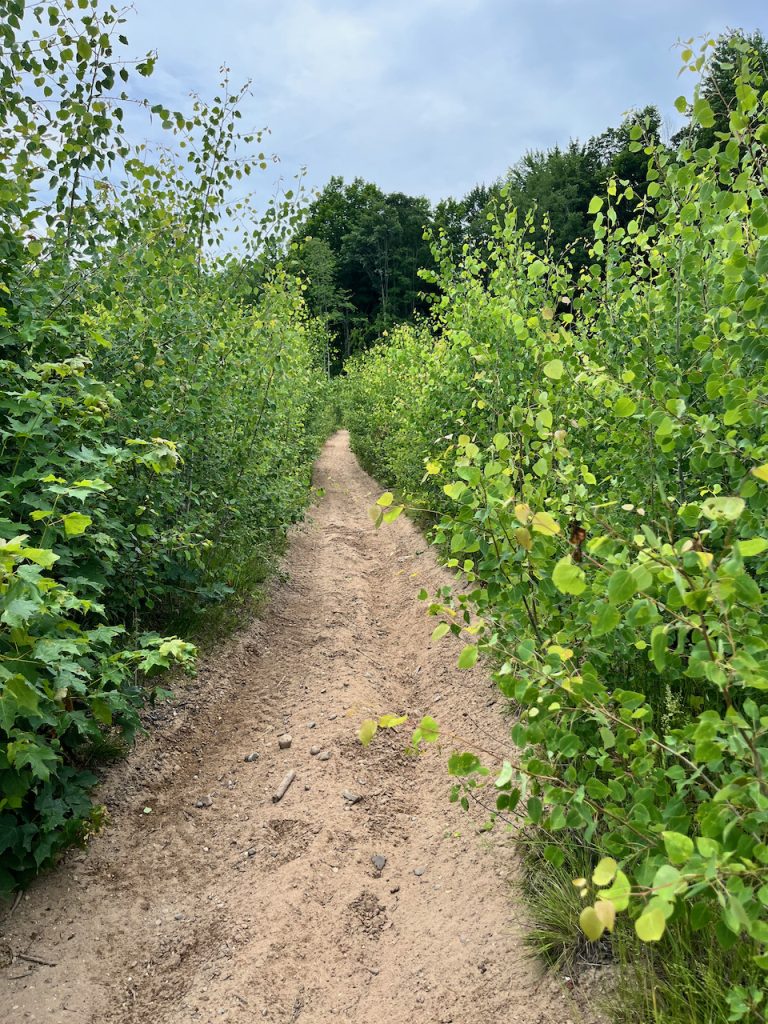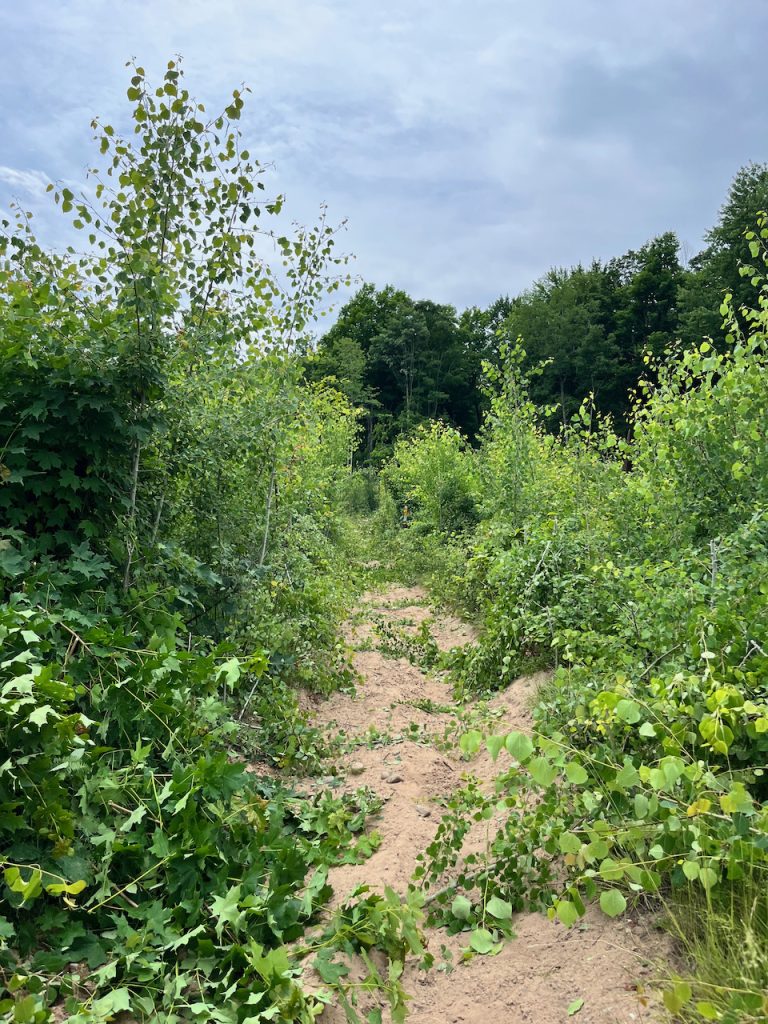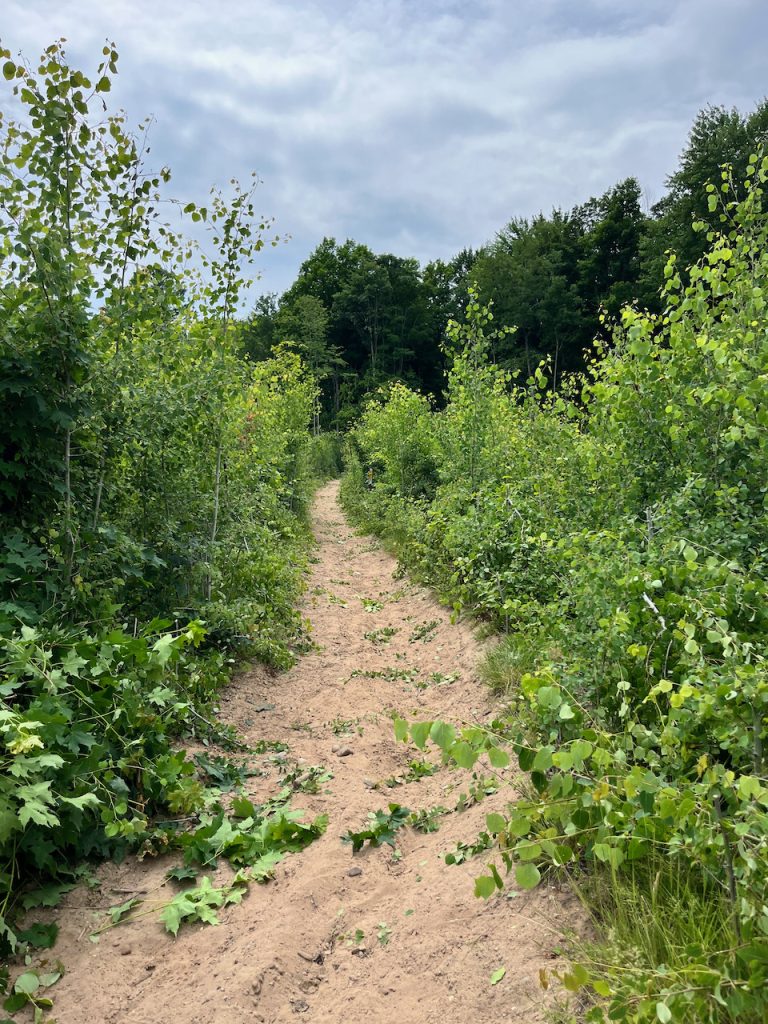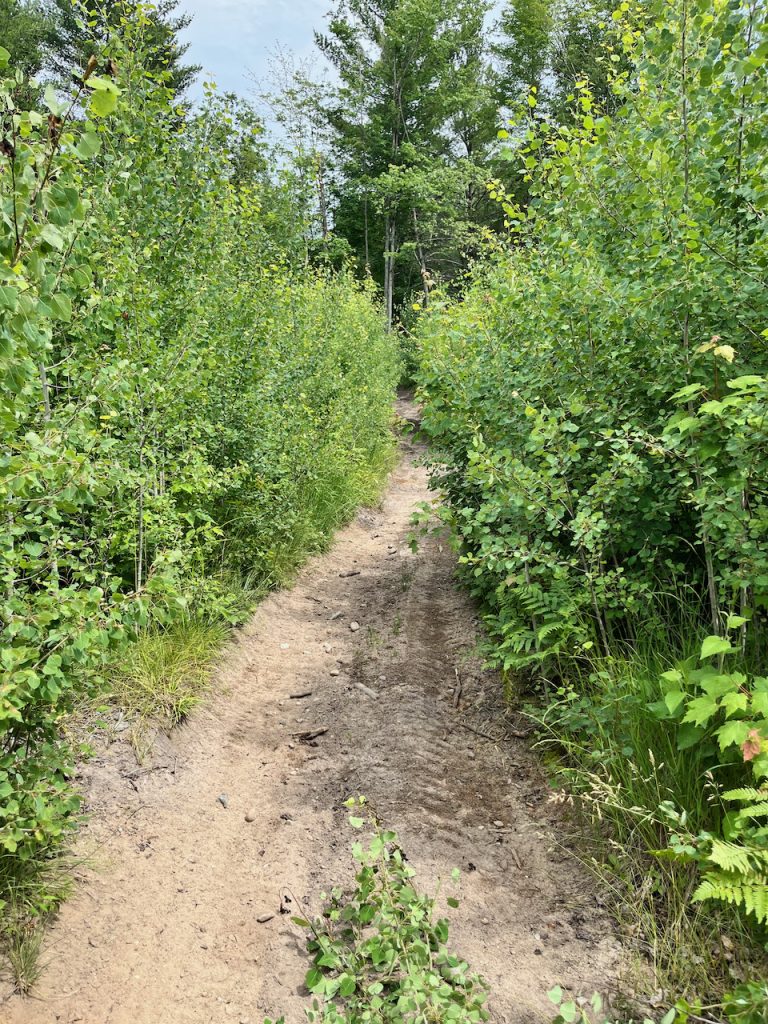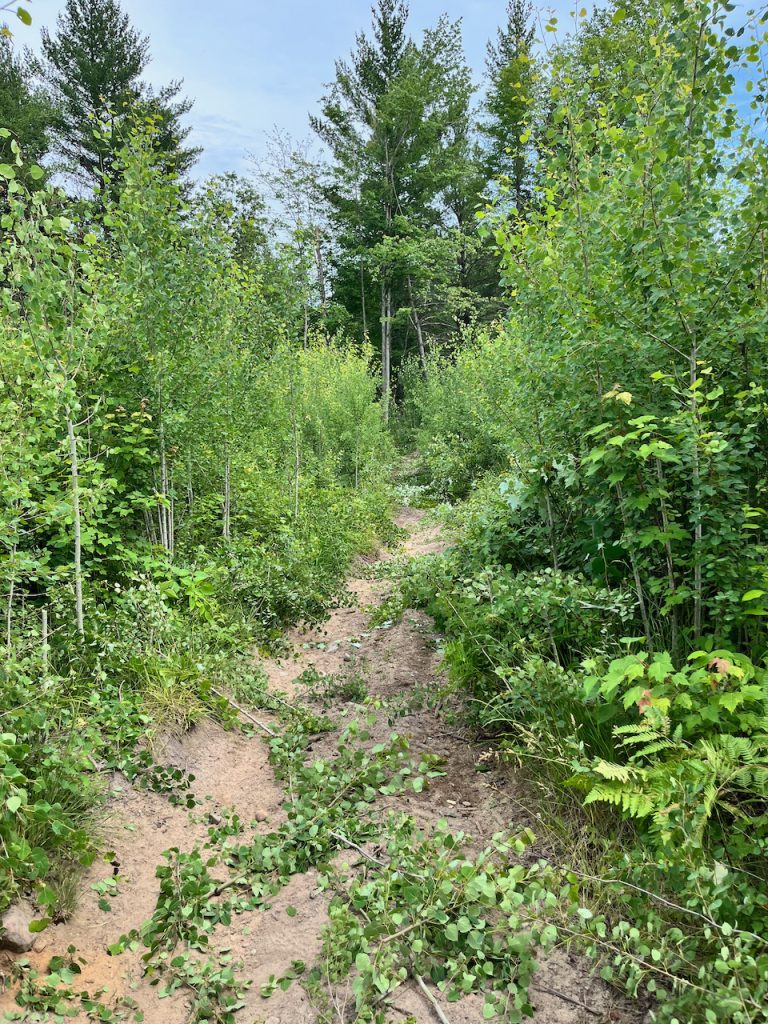As part of our ORV Trail Improvement Grant, we keep the trails clear and passable. One aspect is brushing, which for the 50″ trails means keeping the branches trimmed back and fallen trees/limbs removed. The minimum specification is 50 inches wide by 8 foot tall.
One of the DNR’s more frequently applied forest prescriptions is the “clear-cut” meaning all of the trees in a given area are cut and removed. The stumps are left and the slash (the stuff left over, such as branches) is also left scattered about. Unfortunately, the trail is not a consideration by the DNR when making such prescriptions. What was a well protected section with great site lines and smooth trail deteriorates into something less pleasant.
With the forest canopy removed, the sun now can dry out the trail bed and the wind and more easily move the soil. Less canopy means less organic material being deposited and mixed into the trail bed, so it will lose structure and shift more easily. Basically, it becomes “more sandy”. Whoops form more easily and of course there’s more opportunity for erosion. The trail itself will sink or cut into the surface as well. Just a host of negative-for-trails sorts of things happen.
As the trail bed sinks, the stumps left on the edges of the trail “rise up”. The stumps will lift as there is no longer the weight of the tree pushing it down and as the trail sees erosion from the effects described above, it will sink/lower compounding the exposure to these stumps.
With the canopy gone, the poplar and other softwoods will thrive and grow in a dramatic fashion. The stumps in many cases will put up new shoots as well, resulting in “flowers” of saplings popping out from the stumps. All of this new growth will crowd themselves looking for any available sunlight. That includes the space occupied by the trail.
Typically we find the trail will crowd in during the second year after the clear cut. Substantial effort is required, and I mean walking the trail with saw blade equipped weed whackers and hedge trimmers, to cut this growth back. It’s normal to encounter 3-4 foot of new growth (up as well as over) during each season. In five to ten years, the trees will establish a new canopy and the massive effort to keep the trail brushed back will get back into the “regular” amount of effort.
There is still the issue with the trail-side stumps and loss of sight lines in this younger growth. As we brush these areas, we are not just cutting back everything, we are also trying to keep trees and encourage the canopy to fill in. Usually that means leaving a fairly close tree but taking all of the branches off.
Some photos below show the before, during (with slash laying on the trail) and after (mostly cleared off). All of the slash laying on the trail is just the stuff that was hanging into the trail, which is about half of what was cut as the other half landed outside of the trail.
